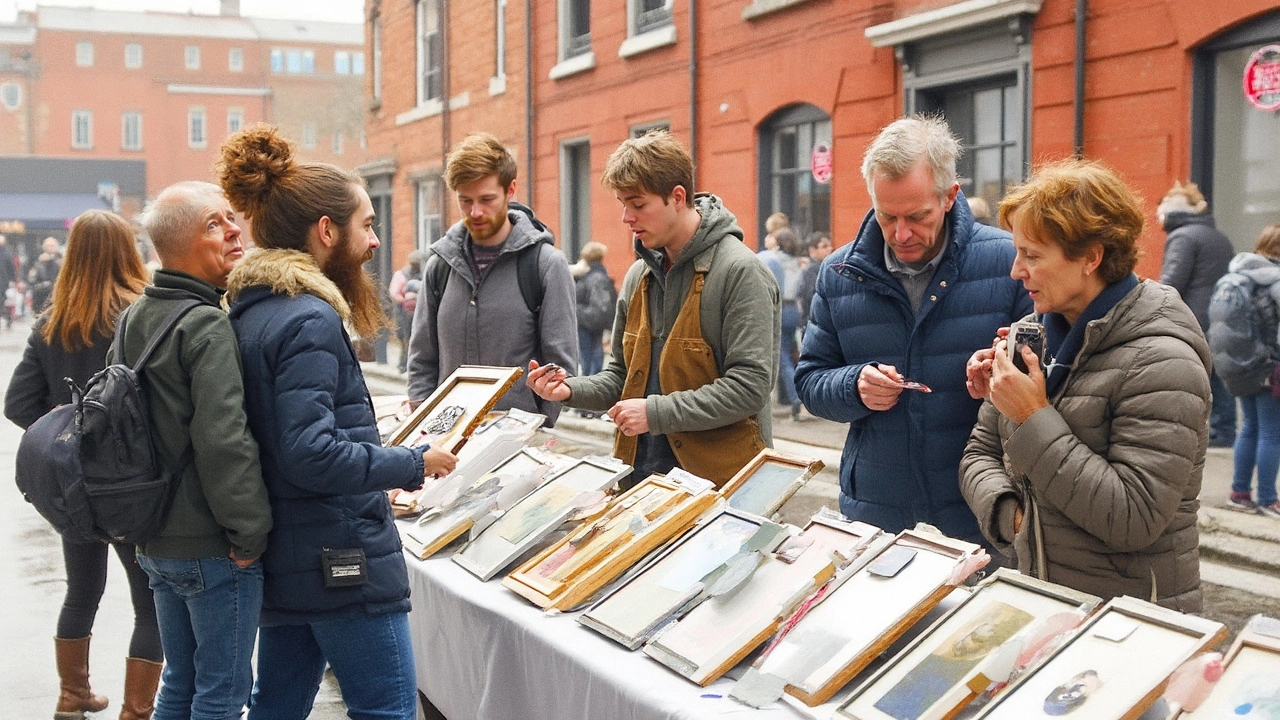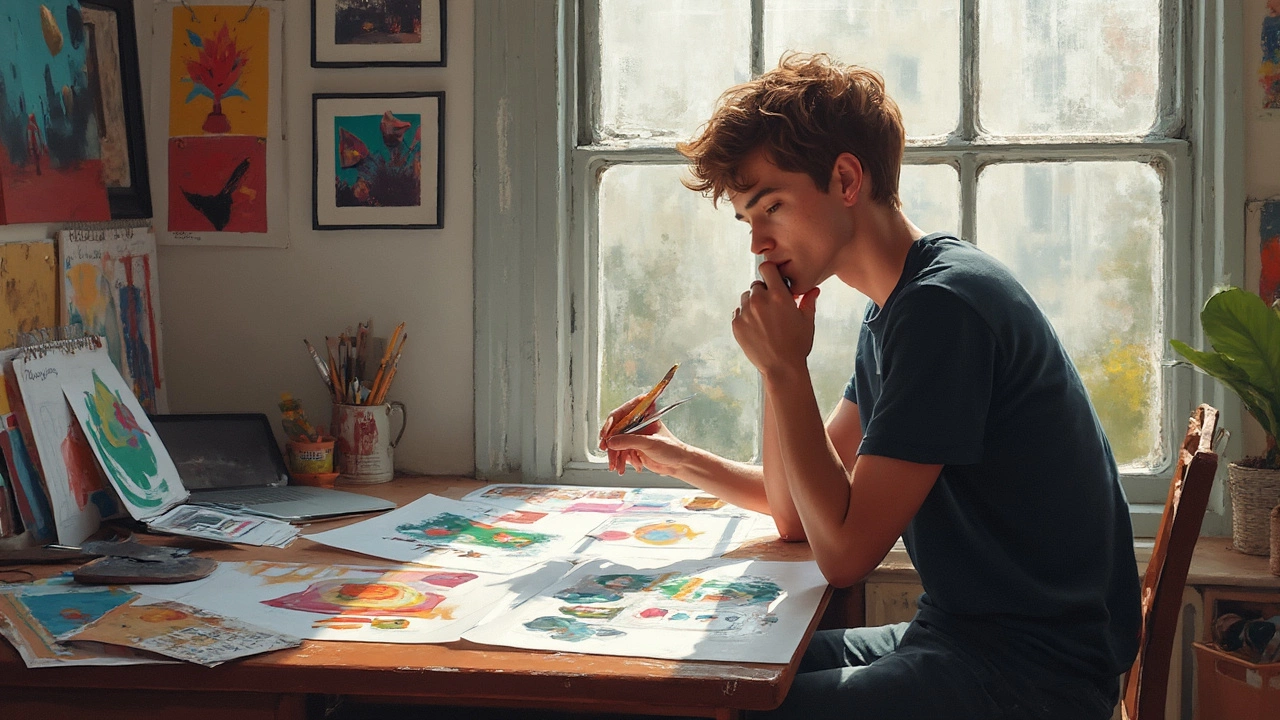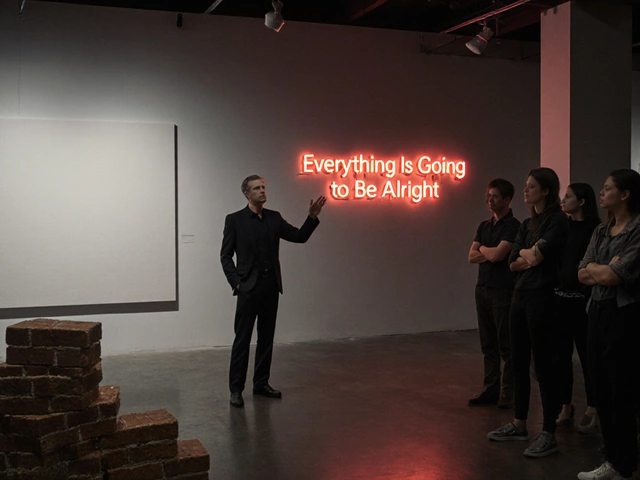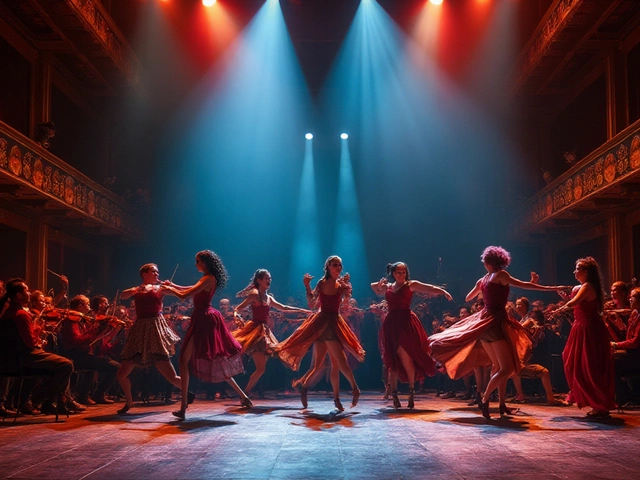Figuring out what to charge for your art prints is, honestly, a headache for most artists. You don't want to scare buyers off, but you also can't keep giving your work away. The good news? There's a way to land on a price that doesn't make you cringe when you say it out loud—and actually helps you pay the bills.
Start by losing the guesswork. The biggest mistake artists make is picking a number out of thin air or just copying what someone else charges without digging into the real costs. And those costs aren't just the paper and ink. We’re talking shipping materials, packaging, your time to edit the file, the actual print production—plus little sneaky fees you never see coming until they hit your account.
Think it’s just the cost of the print? Not quite. Factor in how many prints you plan to make, whether each is shipped flat or rolled, and if you’re doing limited editions (which, by the way, can let you charge more). So before you set a price, break down every expense, even the overlooked ones. Grab a piece of paper, write out your numbers. It’s boring, sure, but it stops you from accidentally underpricing and burning out after a few sales.
- Why Pricing Art Prints Feels So Tricky
- Breaking Down Your True Costs
- Knowing Your Market and Audience
- Smart Pricing Strategies (With Real Numbers)
- Mistakes Artists Make—and How to Dodge Them
Why Pricing Art Prints Feels So Tricky
Landing on the right price for your art prints feels like walking a tightrope. There’s a ton of pressure from all sides. You’ve got folks on Instagram tossing prices on flimsy paper, and then you see gallery artists charging ten times as much for what looks like the same thing. Where’s the middle ground?
A big reason it’s tough is there’s no rock-solid pricing chart for art prints in 2025. Sure, a small open-edition print can go for $15, and limited runs from known indie artists hit $150 or more, but actual sales prices jump all over the place.
You also end up dealing with these headaches:
- Confidence Issues: A lot of artists feel awkward asking what their art is worth, especially when starting out.
- Market Confusion: There are different rules for Etsy, Instagram, art fairs, and local stores—each crowd expects different prices.
- Saturation: Some people price crazy low, selling at barely above cost, which makes others think they have to do the same.
- Emotional Baggage: It’s easy to undervalue your work when you’re attached to the piece or really want to make a sale.
A 2024 survey from Art Storefronts found most new print sellers underpriced their first few batches by 30–50%. No surprise, most said they guessed or copied someone close to their own skill level—without looking at actual costs.
| Artist Level | Average Print Price (2024) | Most Common Format |
|---|---|---|
| Beginner | $20–$40 | 8x10” loose paper |
| Mid-level | $45–$75 | 11x14” matted/packaged |
| Established | $90–$200+ | 16x20” limited edition |
Most artists get caught up copying prices or selling way too low out of fear their prints won’t move. But sticking to numbers that actually work for you—and not just following the crowd—makes all the difference in the long run.
Breaking Down Your True Costs
Before you pick a price, let’s get honest about what it actually costs you to make an art print. Most artists miss at least one thing here and end up short-changing themselves. So, let’s make sure you count every penny—not just the obvious stuff.
First up, there’s the cost of the print itself. If you use a print shop, you’ll pay a set fee for each print. How much? In 2025, a standard A4 giclée print on decent paper is around $8–$12 per print if you order just a few. Bigger sizes run $15–$30 each. If you print at home, factor in the ink (which never lasts as long as you hope), your paper (archival paper is pricey), and the maintenance on your printer.
Now think packaging. Mailing tubes or flat mailers aren’t free. Good rigid mailers on Amazon cost about $1.30 each in bulk. Plus, you’ll want acid-free paper sleeves (around $0.40 each), and you probably need a "Thank You" card—another $0.20. The little stuff adds up fast.
Shipping is next. Never guess this. US domestic shipping for an art print in a flat mailer averages $5–$9 in 2025, depending on where it’s going. International? Expect $15–$22 even for small prints. Look up current postal rates and add tracking if you can.
Don’t forget transaction fees. Etsy, Shopify, or PayPal all take a cut—usually 2.9% plus $0.30 per order in 2025. If you sell through a marketplace, check their slice too. Add this right onto your cost per sale.
Your time matters, too. Every print takes time to sign, number, wrap, and ship. Even if you only pay yourself $20 an hour, spending fifteen minutes per order is a $5 cost you should count.
- Print production (printer or print shop)
- Packing materials (mailers, sleeves, tape, "Thank You" notes)
- Shipping (actual postage plus your time to pack and post)
- Platform or transaction fees
- Your own labor for prep and shipping
Add everything up for one print. If all costs total $17 and you sell the print for $20, you’re barely making anything. That’s why so many artists burn out. So, before you pick your final price, run those numbers and aim for profit above these total costs.
Taking *all* this into account is what separates the hobbyists from the pros in the art prints world. Don’t skip it.

Knowing Your Market and Audience
If you want to actually sell your art prints, you need to get real about who’s buying and how much they’re willing to spend. There’s no one-size-fits-all price, and what works for a comic artist on Instagram probably won’t click for a gallery-style printmaker offline. So, before you even think about setting prices, figure out who’s most likely to buy your work, and where they hang out.
Let’s chop it up:
- If your prints are quirky pop-culture stuff, TikTok and Etsy are hotspots, but buyers usually expect $10–$40 per print.
- Trendy minimalism or photographic art does well on Instagram, with prints going from $40 up to $150, depending on size and the artist's buzz.
- Collectors interested in limited editions or hand-finished prints shop in galleries and at art fairs, where prints can easily hit $200–$900 each.
Here’s a quick look at average art prints prices on different platforms in early 2025:
| Platform | Common Print Price Range (USD) | Main Audience |
|---|---|---|
| Etsy | $15 - $50 | Casual buyers, gift shoppers |
| Instagram shop | $30 - $120 | Trendy millennials, art fans |
| Local art fairs | $40 - $200 | Collectors, community supporters |
| Online galleries | $90 - $400+ | Serious collectors, interior designers |
Your price shouldn’t just fit your costs—it also has to make sense for your buyer. A college student doesn’t pay $300 for a small print, but interior designers totally do, as long as the work fits their project. If most of your fans are teenagers browsing TikTok, keep your base prices accessible and offer extras (like signed versions) for a little more. If you build hype (hello, sold-out limited runs), people get comfortable spending bigger bucks.
Bottom line? Scope out your competitors, ask buyers what they actually spend on prints, and match your pricing to the crowd you want to attract. Don’t price for your own wallet—price for theirs.
Smart Pricing Strategies (With Real Numbers)
You need more than a gut feeling to price your art prints. Pricing with real data gives you backup for your numbers, and keeps you from underselling yourself (which, admit it, happens fast when you’re not sure where to start).
Let’s break down how actual working artists are charging in 2025:
| Print Size | Edition Type | Common Price Range (USD) |
|---|---|---|
| 8" x 10" | Open Edition | $18 - $40 |
| 11" x 14" | Open Edition | $28 - $60 |
| 16" x 20" | Open Edition | $45 - $110 |
| 11" x 14" | Limited Edition (signed, numbered) | $60 - $170 |
Use this table as a jumping-off point. If you’re just starting out, go for the lower end; already have a fanbase? Go higher. But here’s the part so many skip: calculate your break-even price first. Add up all your costs for one print (printing, packaging, shipping, marketplace fees, even little stuff like ink for your signature or business card inserts). Example: if it costs you $14 to make and ship an 8" x 10" print, and you want to actually make money (wild concept, I know), don’t price it at $18—you’re working for coffee money at that point, not rent.
- Start with Cost x 2.5: A lot of artists use this simple formula. It covers your expenses, a bit of profit, and cushion for when stuff goes wrong. If your 11" x 14" costs $20 total, you get $50. Not too low, not crazy high.
- Research competitors: Look up similar artists in your style, in your region, even on platforms like Etsy or INPRNT. Don’t just copy, but check if your price makes sense in that mix.
- Bump up for extras: Are your prints signed, numbered, or include a certificate? Limited editions boost value. People will pay 2-3x more just because there are only 25 copies out there.
- Set tiers: Sell a mix—have a small, entry-level print for impulsive buyers, but offer bigger, more exclusive versions for people who want something special.
If you’re selling online, build in shipping, packaging, and platform fees (like Etsy’s 6.5% plus another 3% for processing). On average, count on fees shaving off 10% or more. The bottom line: don’t be shy. People who value and buy art expect to pay for it, and underpricing sends the wrong message about your work. Set your price with facts, back it up, and stick to it.

Mistakes Artists Make—and How to Dodge Them
If you're new to selling art prints, you'll hear this a lot—“Don’t undersell yourself!” But honestly, that’s just one trap many artists fall into. Here’s a breakdown of the typical mistakes and how you can avoid them, without feeling awkward about your numbers.
- Poor Cost Tracking: It’s crazy how easy it is to forget shipping tubes cost $2–$4 each, or that your printer eats up expensive ink. Miss these and your ‘profit’ fades fast. Always, always track every expense. Even that $0.50 sticker you pop on each package matters when you’re selling dozens.
- Copying Prices Blindly: See a popular artist charging $80 per print? Doesn’t mean it works for you. They might be using a top-tier print lab, or have a massive email list. Your costs and audience aren’t the same. Get real about what feels right for your setup.
- No Room for Growth: Some folks set prices low just to get sales rolling, then get stuck. When you finally want to upgrade paper, or add nicer packaging, you’ll either take a hit or have to hike your prices big time—which looks weird to buyers. Price so there’s space to improve or offer cool extras later.
- Ignoring Your Time: Your art prints don’t just cost what you paid for supplies. If you spend an hour color-correcting photos or answering emails, that labor matters. Cars aren’t free just because you owned the factory—you put in work. Add your time as part of your value.
- Lack of Transparency: Ever seen someone list a print as $30, then charge $20 shipping at checkout? Instant turnoff. Be clear about total costs up front—studies show buyers bounce when hit with surprise fees.
Here’s a snapshot showing how much sneaky costs can add up for a typical 12x18 art print run of 20 copies (prices in USD):
| Item | Cost per Print |
|---|---|
| High quality paper | $3.00 |
| Ink | $1.50 |
| Shipping tube | $2.50 |
| Label & sticker | $0.80 |
| Shop fee (Etsy, etc) | $1.20 |
| Your time (20 minutes per print: $18/hr) | $6.00 |
Total basic cost: $15 per print—before marketing, website fees, or extra time for customer questions. If you sell for $20, you’re barely scraping by. That’s why tracking every detail makes or breaks your profits.
So when working out what to charge for your art prints, ask yourself: Am I really covering everything here? Price with honesty and long-term thinking, and you won’t have to second-guess yourself—no matter what anyone else is charging.





